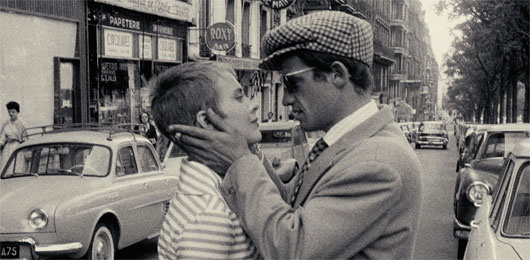 Fresh thats exactly the reaction we wanted, says Pierre Rissient, assistant director of Jean?Luc Godard’s masterpiece Breathless which is being re-released to cinemas 50 years after it was made. Its true; Breathless is a startling example of the French new wave and still has a lively, improvised feel to it.
Fresh thats exactly the reaction we wanted, says Pierre Rissient, assistant director of Jean?Luc Godard’s masterpiece Breathless which is being re-released to cinemas 50 years after it was made. Its true; Breathless is a startling example of the French new wave and still has a lively, improvised feel to it.
Its the story of a low-life gangster, played by Jean-Paul Belmondo, who steals a car in Marseille and drives to Paris, killing a policeman en route, to hook up with old flame Jean Seberg and dodge the cops. Its classic b-movie stuff, but lifted by the sprightly, lively feel, moving camera and lovely performances.
Rissient was just 22 when he worked on the iconic film, Godard 29, and the Parisian is convinced that was a bit part of the films look and appeal. The sprightly 73-year-old explained: We were all very young, so we could work strange hours and run up and down the streets of Paris with no problem. We made it in August, which in Paris is very quiet, there are fewer people around so we could work in a much freer way.
In fact, as Rissient revealed, making the film look so innovative and lively came from a very unusual source: The French post office had these little trolleys, for carrying and delivering the mail. So we grabbed one and had the cinematographer Raoul Coutard sitting in with his camera. It was quite funny, because we were wheeling him around the Champs Elysees after the actors and all you could see poking out of this trolley was the top of his head.
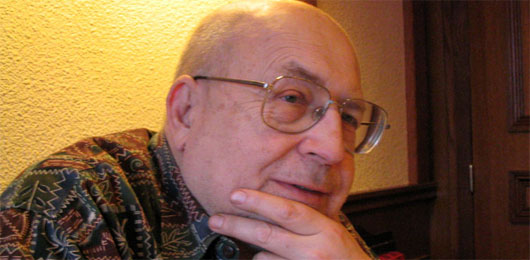 The assistant director of Breathless – Pierre Rissient The assistant director of Breathless – Pierre Rissient |
The film has an iconic feel to it, partly because of the famous shot of Jean Seberg and Jean-Paul Belmondo walking down the Champs Elysees, she in a Herald Tribune t-shirt, he in sunglasses, cigarette dangling from his lips. She was a delight Rissient said of his female star, She could speak French with an American accent, but that was the part so she fitted it perfectly, and she had radiance with almost no make-up. She had a bad life, I saw her years later and she was sad, and had an awful end, but she was a lovely girl. Seberg committed suicide, whereas Belmondo is still working in France: He was a student actor, he was very inexperienced, but it all worked, Said Rissient.
As for the famously grumpy, sometimes violent Godard, Rissient said: I never had a problem with him. We worked hard together and he liked to talk about movies, but I never saw that other side of him never. I saw him years later and see him from time to time, and he is always nice to me.
Rissient admitted that the many references in Breathless to film noir are no coincidence: Of course, we were watching hundreds of film noirs, Humphrey Bogart films and marvellous American films. We were very influenced by them, totally but we also wanted to make a French film. If you go from Kiss Me Deadly backwards (1955) that was the period were were heavily influenced by. But of course we were also watching French films. There was a period in the 1930s which is almost forgotten now, but was very strong in the history of French cinema and we loved those films too.
A huge part of the reason Breathless looks so sharp is the jump-cutting. Rather than Belmondos character walking up to the cop, shooting him, getting in the car and driving away, we see the two of them together, a close-up of a gun, a falling body and a car zooming away. Its a sort of filmic shorthand, and works brilliantly. At the time it must have looked revolutionary, but Rissient argued: Its obviously a very interesting part of the film, but I cant say it was the first time anyone had ever done it. Some filmmakers had used this technique before, but it certainly works in our film. The reason we had to do it was because sometimes we had continuity issues, and the lighting was different or too difficult, like in the corridor scene, so we had to jump forward. It moves the story though.
The influence of Breathless should not be underestimated. Between 1958 and 1963 an astonishing 170 French filmmakers directed their first features under the new wave banner. Rissient did not join them, waiting until 1977 to direct the first of two films, Alibis, but is happier thinking about his future than looking back too much. He is now involved in promoting South African film Life Above All, which received a lot of attention and acclaim at this years Cannes Film Festival. I am not a businessman, he said, But I want to continue to support interesting films.
Rissient may not be excited about looking back into the past too much, but is happy to answer one last question about where Breathless stands in the history of cinema: I think it was the start of a new chapter in French cinema, it kick-started the new wave of French films and was exciting it was an exciting time. I like French cinema at the moment, but we were trying to do something new.
Breathless: 50th Anniversary is out now in cinemas and on DVD/Blu-ray September 13th
MIKE MARTIN
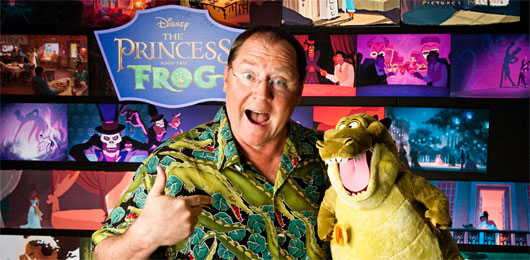 John Lasseterco-founder of Pixar, the history-making computer animation studio, chief creative officer of Walt Disney and Pixar Animation Studios; and the principal creative advisor to Walt Disney Imagineering is one busy guy. Always at the forefront of what can be accomplished within animation, Lasseter is so excited for Walt Disney Animation Studios release, THE PRINCESS AND THE FROG – on DVD and Blu-ray June 21st – which marks the return of the musical fairytale with a Princess at the centre.
John Lasseterco-founder of Pixar, the history-making computer animation studio, chief creative officer of Walt Disney and Pixar Animation Studios; and the principal creative advisor to Walt Disney Imagineering is one busy guy. Always at the forefront of what can be accomplished within animation, Lasseter is so excited for Walt Disney Animation Studios release, THE PRINCESS AND THE FROG – on DVD and Blu-ray June 21st – which marks the return of the musical fairytale with a Princess at the centre.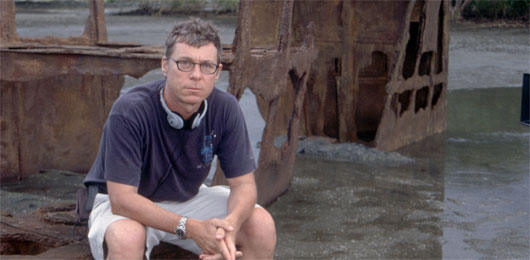 Aussie director Russell Mulcahy has certainly had an interesting career. Starting off making music videos, he broke into the film world with his bizarre but effective 1984 horror movie Razorback, about a wild pig that terrorises the locals in the Aussie outback. He then hit the big time with Highlander (and well ignore the fact he also made Highlander II), following it with Blue Ice and The Shadow.
Aussie director Russell Mulcahy has certainly had an interesting career. Starting off making music videos, he broke into the film world with his bizarre but effective 1984 horror movie Razorback, about a wild pig that terrorises the locals in the Aussie outback. He then hit the big time with Highlander (and well ignore the fact he also made Highlander II), following it with Blue Ice and The Shadow.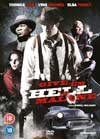 think its a very original piece. I want to make sure people are scared of the supermarket!
think its a very original piece. I want to make sure people are scared of the supermarket!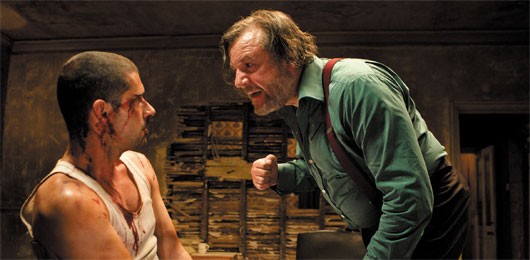 Since he emerged to great acclaim in Alan Clarkes Scum 30 years ago, Ray Winstone has become one of Britains busiest and most popular screen actors. Key highlights in his film career include Nil By Mouth, The War Zone, Sexy Beast, Last Orders, Cold Mountain, The Proposition, The Departed, Beowulf and Indiana Jones and the Kingdom of the Crystal Skull.
Since he emerged to great acclaim in Alan Clarkes Scum 30 years ago, Ray Winstone has become one of Britains busiest and most popular screen actors. Key highlights in his film career include Nil By Mouth, The War Zone, Sexy Beast, Last Orders, Cold Mountain, The Proposition, The Departed, Beowulf and Indiana Jones and the Kingdom of the Crystal Skull. the work for yourself, and then it can be a little bit cruel, but thats life.
the work for yourself, and then it can be a little bit cruel, but thats life.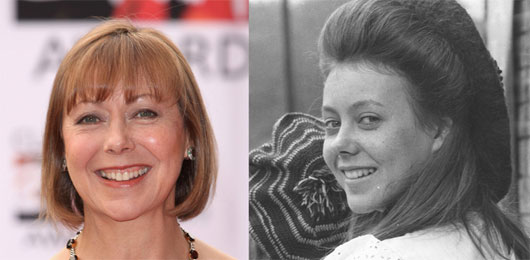 For the first part of Mike Martin’s interview with Jenny Agutter,
For the first part of Mike Martin’s interview with Jenny Agutter, 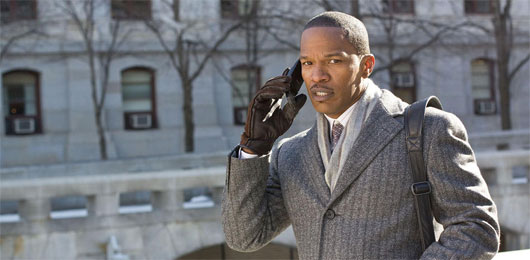 There’s little doubt Jamie Foxx is quite the dude. He’s won an Oscar for Ray and found success in drama, comedy and music. In Law Abiding Citizen, which is out on DVD and Blu-ray today (April 12th, 2010), he plays Nick Rice, the assistant District Attorney who Gerard Butlers Clyde Shelton blames for the light sentence the killers of him family received, and who therefore is the subject of his cendetta. We spoke to Foxx about working with Butler and how he went about becoming a hotshot lawyer.
There’s little doubt Jamie Foxx is quite the dude. He’s won an Oscar for Ray and found success in drama, comedy and music. In Law Abiding Citizen, which is out on DVD and Blu-ray today (April 12th, 2010), he plays Nick Rice, the assistant District Attorney who Gerard Butlers Clyde Shelton blames for the light sentence the killers of him family received, and who therefore is the subject of his cendetta. We spoke to Foxx about working with Butler and how he went about becoming a hotshot lawyer.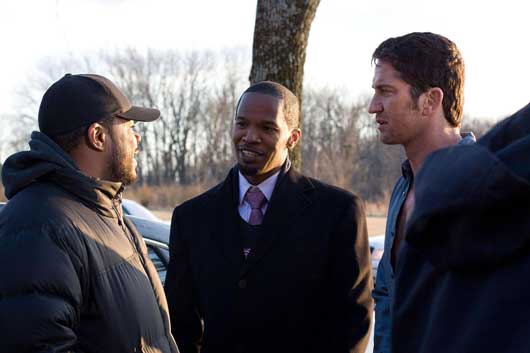
You must be logged in to post a comment.